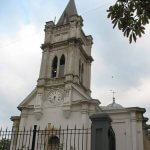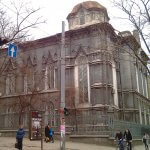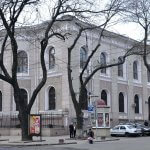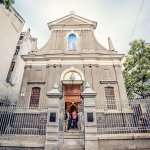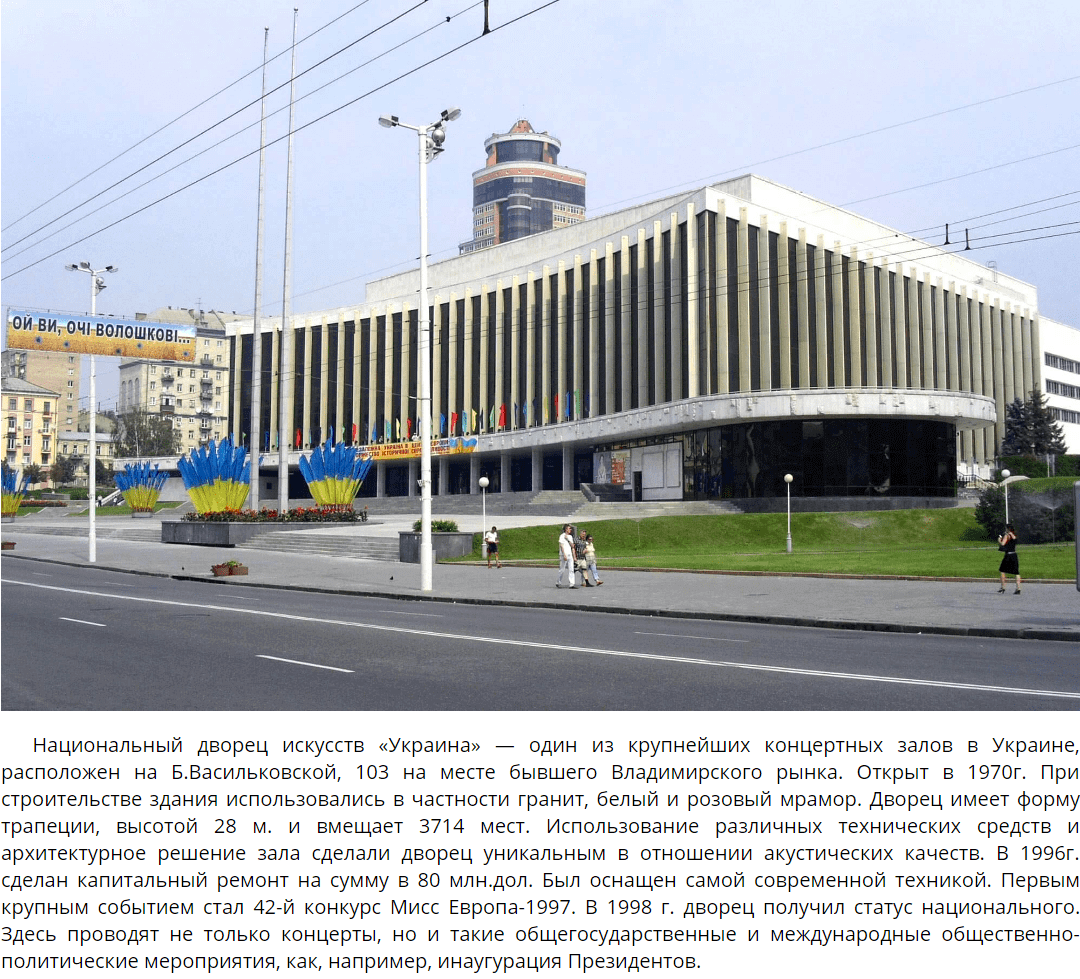Temples in Odessa
- Cathedral of the Assumption of the Blessed Virgin Mary
- Trinity Cathedral
- Savior Transfiguration Cathedral
- Brodsky synagogue
- Synagogue Or Sameakh
- Church of St. Peter
- Presbyterian Church
Cathedral of the Assumption of the Blessed Virgin Mary – the Catholic church, built in 1847-1853 in neo-gothic style, is an architectural monument (Ekateryninska str., 33). After its opening, the church was presented with a painting by the artist Carlo Dolce (XVII century), with marble figures of the apostles of the Italian work, with figures of evangelists, as well as with the “Procession”-themed paintings by artists of Düsseldorf. Countess Olga Pototskay donated a copy of Raphael’s painting “The Ascension of the Most Holy Theotokos”. With the advent of Soviet force, the cathedral was closed, and the building was partially demolished. However, hiding a number of times in the church of St. Peter saved them. In 1991, the building was returned to believers. Restoration works were carried out, and in 2003, the remaining valuables belonging to the cathedral were returned. It is interesting that it was in the walls of the Cathedral of the Assumption of the Blessed Virgin Mary that the Odessa mayor Count Langeron was buried.
Trinity Cathedral – an Orthodox church founded in 1795 for the Greek community living in Odessa (Ekateryninska str., 55). Originally a small wooden church was built. In 1808, a stone church was built on the site of the church, and later – 2 chapels, which gave the building a cross-shaped view in the Byzantine style with a dome and a bell tower. In the 1930s, the church was closed, and the upper tier of the bell was destroyed (restored in the 1990s). During the German occupation, the church resumed its work and since then its doors have been open to worshipers. Since 2006, the cathedral refers to as the Holy Trinity Cathedral (Greek).
Savior Transfiguration Cathedral – the largest Orthodox church erected in Odessa (Soborna Square, 3). The church was originally laid here in 1794. After the reconstruction carried out in 1903, the cathedral became one of the largest churches in the country (capacity – up to 12 thousand parishioners). However, with the advent of Soviet forces in 1936, it was destroyed. In the late 1990s excavations were carried out, during which the old foundation of the cathedral was found. It was the beginning of its revival. In the 2000s, the cathedral was reconstructed in its historic place. Today it is the Transfiguration Cathedral. Just like many years ago, it rests the ashes of the Vorontsovs. Nearby there is a fountain-monument in honor of the opening of the Odessa water supply system, as well as a monument to the governor-general M. Vorontsov.
Brodsky synagogue – the first choral synagogue in Odessa, built in the Gothic style in the 1860s. (Zhukovsky str., 18). It got its name from the immigrants of Jewish origin, who previously lived in the city of Brody (Galicia). The synagogue building was erected at the expense of the community. After opening, this place became the center of the Odessa Jewish intelligentsia — Chaliapin, Minkowski, Sholom Aleichem, and Babel used to come here. It was in the Brodsky synagogue that services for the first time began to be held with musical accompaniment. With the advent of Soviet power, the synagogue was closed, and a Jewish working club was placed in the room, and later – an archive, which existed here until 2016.
Synagogue Or Sameakh – the main synagogue of the city of Odessa, erected in 1850 (Jewish str., 25). It is a historical monument of architecture built in the Florentine-Romanesque style. In Soviet times, it was closed, and the building was used to house various organizations, such as a pet museum and a children’s music theater. Later the premises of the synagogue were given to the Odessa Pedagogical Institute. Only in the 1990s the synagogue was returned to the Jewish community. Today, prayers are held here and not only parishioners of Odessa but also believers from nearby cities gather here. The Hebrew University is also open, along with schools and heders.
Church of St. Peter – the Catholic baroque church, built in 1912-1913 at the expense of a descendant of French émigrants A. Vassal (Havanna str., 5). It is a small cathedral (26-m long, 12-m wide) with a gray facade without special decoration. The only decoration of the church is a mosaic with the image of St. Peter and the inscription “Sanctus Petrus” above the entrance. Located next to the seaport, the cathedral first served as a chapel, mainly for sailor worshipers. In Soviet times, the church of St. Peter the Apostle was the only operational Catholic church in Odessa. The valuables from the Cathedral of the Assumption of the Blessed Virgin Mary have been kept among the walls of St. Peter’s church for many years.
Presbyterian Church – a cathedral erected in 1896 for the Reformed community (Pasteur str., 62). Since 1900, the doors of the church were open to parishioners. Also a shelter for unemployed governess was opened on its territory. In Soviet times, the cathedral was closed down, and the building itself was reorganized into a puppet theater. Only in 1998 the premises were returned to the Evangelical Reformed Presbyterian Church. Today the church often hosts organ vocal music evenings. Anyone can visit the concert.





